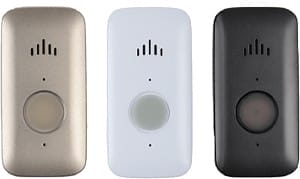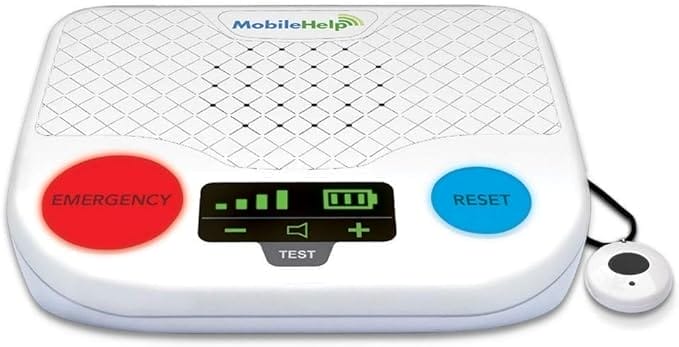[Last updated March 29, 2024]

If you’re approaching or have reached a certain milestone in your retirement journey, it’s crucial to be aware of the deadlines and requirements for withdrawing from your retirement accounts. These withdrawals are known as required minimum distributions (RMDs), and they’re not just a recommendation but a legal requirement once you reach a specific age. The deadline for the first of these withdrawals is a critical date in your financial calendar: April 1 of the year following the year you turn 73. This article dives into the specifics of RMD requirements, including changes that could affect your retirement planning, the significant consequences of missing the April deadline, and how you can use the funds so you withdraw money properly — which ultimately frees up more funding to help pay for the costs of long-term senior care services and other senior care-related costs you might encounter.
What is a required minimum distribution (RMD)?
If you’ve put money into retirement accounts over the years, your portfolio has grown by the time you reach your early 70s. Unfortunately, the federal government won’t let tax-advantaged retirement accounts grow indefinitely. Instead, they’ve mandated that people begin withdrawing funds after turning 73 and bring the account balance down to fund retirement or pay for senior care.
Though you might want to leave as much money in your accounts as possible to let them grow, you can also see the RMD as an opportunity to reap the fruits of your labor and diligent planning while enjoying your retirement as comfortably as possible.
In most cases, the deadline for taking your first RMD is April 1 of the year after you turn 73, which is a jump from the previous age of 72. The age increase means your money has another year to grow before you have to start withdrawing. After taking your first RMD, the deadline is December 31 of every year.
The amount of your RMD varies based on how much you have in your accounts and your current age. You can calculate your RMD using the IRS’s Uniform Lifetime Table or RMD worksheets. Even with worksheets and tables accessible on the IRS website, calculating your RMD isn’t easy. These tools from the IRS aren’t guaranteed and are a general means of checking your work or getting a broad idea of your RMD situation. Because determining an accurate, exact annual RMD is tricky, many seniors mistakenly miss the target and have to pay a hefty penalty. To calculate and take your RMD correctly, work with a trusted tax professional or financial advisor.
Keep in mind that the RMD is a minimum requirement — if you want or need more money from a retirement account, you can exceed the RMD as much as you’d like.
Which retirement accounts have RMD rules?
Most retirement accounts are affected by the RMD except for Roth accounts. If you have a retirement portfolio classified as any of these accounts, you’ll have to take an annual RMD:
- Traditional (non-Roth) IRA.
- SEP IRA.
- SIMPLE IRA.
- 401(k) plan.
- 403(b) plan.
- 457(b) plan.
- A profit-sharing plan.
- Other defined contribution plan.
Roth IRA account holders do not have to withdraw an annual RMD; for tax year 2024, Roth 401(k) accounts are also exempt. If you don’t need the money to pay for long-term care or do but have other accounts that require an RMD, talk to your financial advisor about whether it’s wise in your situation to let your Roth account continue to grow. A note of caution: A beneficiary of a Roth IRA will have to take an RMD after the account holder’s death, so ensure your family or other beneficiaries prepare for the tax implications of withdrawing a required annual amount.
Consequences of missing the April withdrawal deadline
Retirement account holders must understand and adhere to required minimum distributions to avoid penalties. The IRS requires RMDs to be calculated separately for each IRA account, but withdrawals can be taken from any combination of accounts to meet the total yearly requirement. Other retirement accounts require that RMDs be taken separately. The account owner is responsible for ensuring the correct RMD amount is withdrawn, even if they get help from IRA trustees or plan administrators.
If the full RMD amount isn’t withdrawn by the deadline, there is a high tax of 25% on the amount that wasn’t taken out for 2023 and later years. This amount has been lowered from the 50% tax charged prior to 2023. If the retiree corrects the missed amount within two years, the tax can be further reduced to 10%, but they must file Form 5329 with the federal tax return for the year the RMD was required but not fully taken.
Because calculating RMDs can be complicated and the penalties for not following the rules are severe, it’s a good idea to use IRS worksheets and talk to financial advisors or tax professionals. This can help retirees make sure they are following RMD rules and avoid financial stress. It’s important to plan carefully for retirement and follow IRS guidelines to have a financially secure retirement.
Significant RMD changes for tax year 2024
The SECURE 2.0 Act has introduced a significant change for Roth 401(k) account holders starting in 2024. As a result of this legislation, Roth 401(k) accounts will no longer be subject to required minimum distributions. This change aligns the treatment of Roth 401(k)s with Roth IRAs, which have always been exempt from RMD requirements.
It’s important to note that this new rule takes effect in 2024, meaning that Roth 401(k) account holders must still take RMDs for the 2023 tax year. However, beginning in 2024, retirees with Roth 401(k)s will no longer need to worry about calculating and withdrawing RMDs from these accounts.
Before this change, retirees with a Roth 401(k) would often need to roll the account over into a Roth IRA to avoid taking RMDs. The SECURE 2.0 Act eliminates this additional step, simplifying the retirement planning process for those with Roth 401(k)s. This update provides greater flexibility for retirees with Roth 401(k)s, allowing them to keep their savings in these accounts longer without the obligation to take annual distributions.
How can I use the money from my RMD?
RMDs are entirely discretionary, meaning how you use your retirement account withdrawal is totally up to you. If you enjoy an active retirement, you can use the cash from your RMD and subsequent withdrawals to pay for the next vacation or family visit. If you need to pay for senior care or long-term care, the RMD can also help cover any living expenses, including assisted living fees, home care payments, and any medical device not covered by insurance that makes your life more pleasant.
Ultimately, the RMD doesn’t have to be a source of stress in retirement. Although the rules are complex and the calculations even more so, plenty of resources are available to clarify the details and lay out precisely what your RMD will be and when you must begin taking it. Taking your RMDs provides more cash flow to fund a blissful retirement or boost your quality of life by paying for senior care services.








